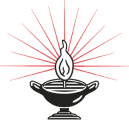André M. Peñalver is a county judge in Tacoma, Washington, whose writing has appeared in America and Pilgrim Journal.
From my chambers in the county courthouse, I can hear the bells of my parish church. The tinny Runic rhyme wells outside my window, between the courthouse and the jail, across to City Hall and the crooked lines of tent villages beside the park. If one is quiet, the bells are even discernible at the bottom of the hill, in the business district.
They are merry bells for weddings, and somber bells for funerals, and irksome bells that remind me that there is a holy day that I forgot. (In truth, the bells are all the same, but their context matters.) When a church bell rings across a town, it lays some claim to it, like a sprinkling of holy water from an aspergillum. Such a claim can be literal: A Cockney, for example, is anyone living within the sound of the bells of Saint Mary-e-Bow in London’s Cheapside. The sound of the bell marks its audience, whoever it might be.
And therein lies the tension of a church bell—an expression of faith for the bell ringer but also an imposition of that faith on everyone else. The distinction might not matter much to most of us, but for those who think carefully about the matter—particularly those who see danger in religion—the distinction is glaring. It is why the French Revolutionaries banned the church bell. So did the Mexican Revolutionaries of 1910. And the Spanish Republicans of 1931.
The American answer has always been to protect the bell. The First Amendment may prohibit the establishment of religion, but in protecting the free expression of religion, it means that the public square might be awash in the clinging of bells and—along with them—calls to prayer. The resulting cacophony might lack the dry order of a laicized French boulevard, but it has a certain energy all its own, some hidden ingredient in America’s successes. It is at least a roadblock to our worse inclinations.
My parish church was built in 1901, an imposing neo-Romanesque church with four spires and a lot of stone, as grand and bold as the National Guard armory one block away. A primary school followed a decade later. The Irish American worshippers who looked upon these mighty works—transposed so inelegantly from European designs onto Salishan soil—could rightly claim to have arrived. But, vanitas vanitatum, the feeling was short-lived. In 1919, the church burned down, and the parish had no choice but to move its worship into the church basement.
In time, the parish settled permanently into the basement, which now contains all the trappings of a proper church. It built a new roof of local timber, which allows a flow of air and light into the sanctuary. Saints that did not appear in the old church—Our Lady of Guadalupe, Kateri Tekakwitha, and Lorenzo Ruiz—now have pride of place in the new one. On the steep-sloped streets that are typical on the Puget Sound, the basement fits, tucked into the hill as if it belongs there.
The other great building—the parish school—closed a half-century later, in the 1970s. Its immigrant students had long since assimilated into the middle-class suburbs. This new generation moved away from its old parish church and the urban core of the city, much like the downtown department stores that fled in the same decade. The parish has repurposed the school building as the center for Catholic Community Services. It serves the tent villages nearby.
The parish has long since abandoned any plans to rebuild. The memory of the old church building only exists in the history page of the parish website. In truth, the old spires so much in vogue at the turn of the last century are now well out of date. But the parish did not remain all basement. There was one part of the old church its members did rebuild, the only part. It was the bell tower. Its bell resumes its rhythm, casting its blessings on believers and unbelievers alike.
This essay appears in the Lent 2025 issue of The Lamp.




